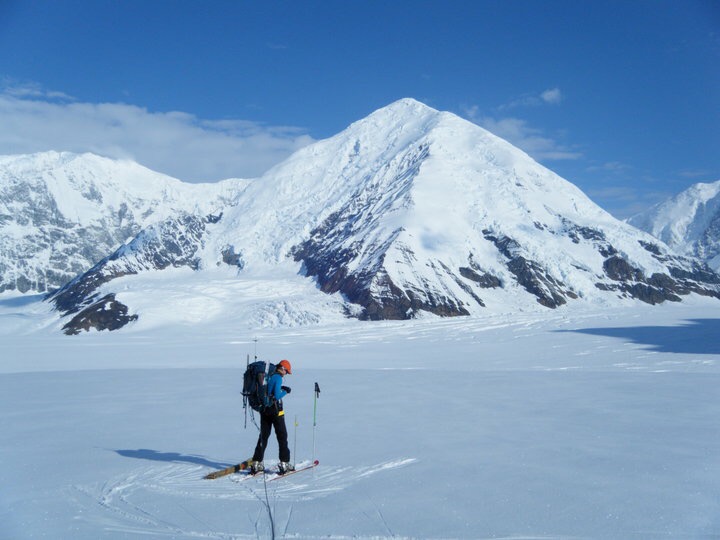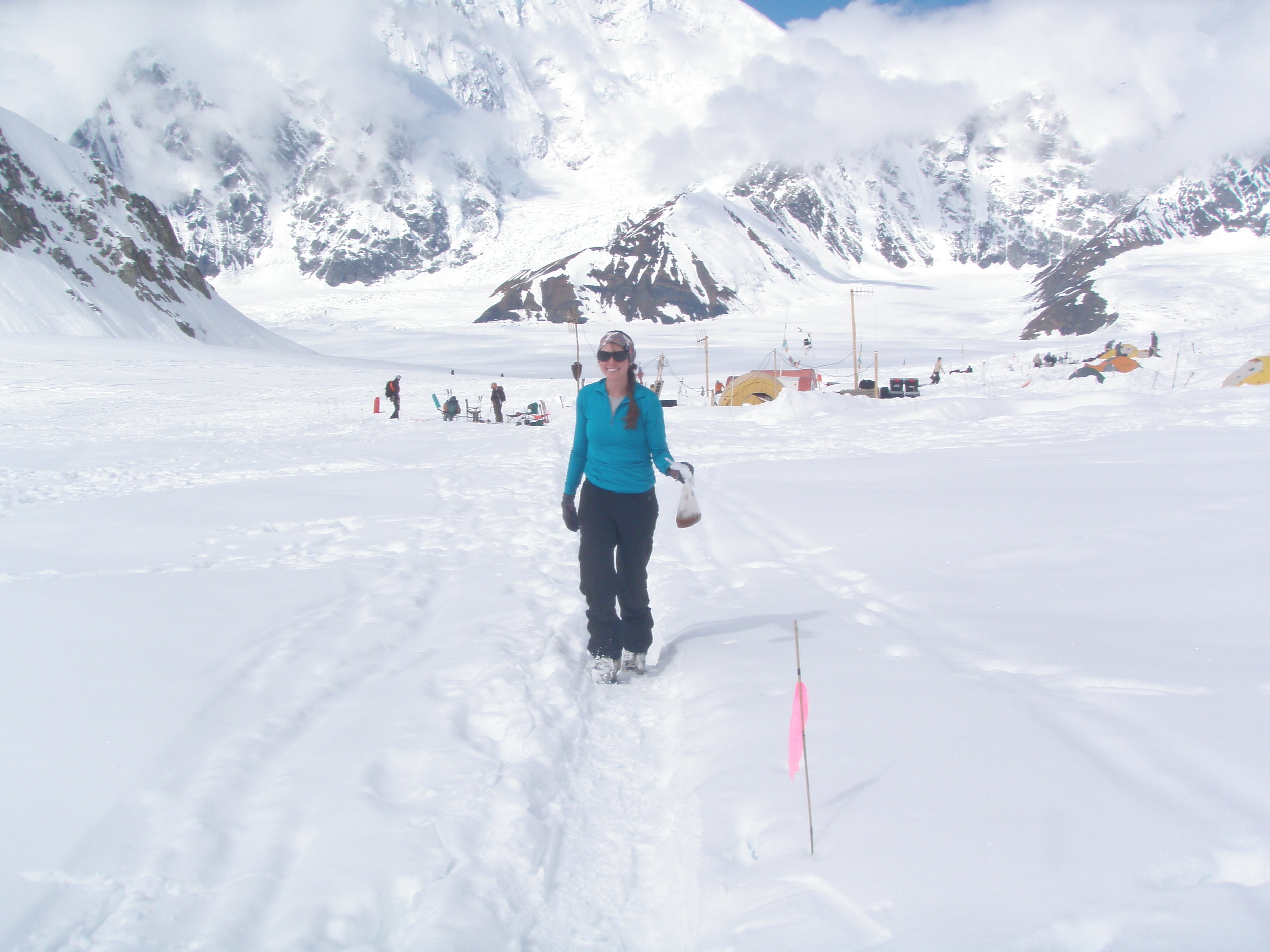Climate Change on Denali Is Causing Latrine Pits to Melt
Photo courtesy Katie Goodwin
This is a guest post from Katie Goodwin, Policy Analyst with Access Fund.
I have been thinking a lot about climate change, its effects on the environment and how our changing landscape may affect the way we recreate and manage outdoor recreation now and in the future. It is widely documented that our world’s glaciers are melting at a rapid rate due to climate change and an increase in global temperatures. These changing landscapes will have long ranging impacts on recreational use, management and of course the environment. In 2010 I spent the summer climbing season on Denali studying how melting glaciers in Alaska are causing previously buried and frozen human waste to begin melting out.
What does high altitude mountaineering, human waste and climate change have to do with one another? This was the exact question I studied for my graduate degree at Alaska Pacific University in the Earth Science department with glaciologist and Associate Professor Dr. Mike Loso. Our research focused on the Kahiltna Glacier, a 77-km-long valley glacier draining from the south side of Denali in Denali National Park and Preserve, Alaska, which provides access each season for an average of 1,200 climbers attempting to ascend the highest mountain in North America. We partnered with Denali National Park to conduct a multi year study modeling the rate of melt of the Kahiltna glacier to estimate among other things when the historic latrine pits buried along the famous climbing route could be expected to melt out of the glacier and enter the water system down below Denali.
Photo courtesy Katie Goodwin
Ninety-four percent of Denali climbers use the popular West Buttress climbing route, located almost entirely on the Kahiltna Glacier. With such high levels of use, the National Park Service (NPS) must intensively manage human activity on Denali to mitigate the potentially negative impacts of heavy use on the glacial environment. In particular, human waste disposal on the Kahiltna Glacier has become an issue with high number of climbers attempting Denali.
For over 60 years climbers have been attempting to stand atop the daunting 20,300 foot summit of Denali. The average trip length is 18 days, and it is estimated that Denali climbers annually generate over two metric tons of human waste, we estimated over 66 tons of human waste is currently buried inside the glacier and slowly moving down glacier. The Kahiltna Glacier naturally flows downhill, like a slow river of ice, as ice flows to lower elevations it eventually hits a point it will begin to melt until it terminates in a river and with it a lot of human waste.
Research by the National Park Service found that in the past 50 years, the area covered by ice within the Alaskan parks has diminished by 8%. Dr. Loso is now a Geologist at Wrangell-St. Elias National Park and Preserve and Principal Investigator (Cryosphere)
Central Alaska Network, Inventory and Monitoring Program told USA Today, “We have lost more glacier cover in the Alaskan national parks than there is area in the whole state of Rhode Island. One of the consequences of warming temperatures is that the surface of the glacier is melting more quickly.”
The study Dr. Loso and I conducted back in 2010 looked to answer the question of how long will the crevassed waste and buried latrine pits take to emerge in the melt zone of the glacier? The answer depends on several variables including the speed at which the glacier is melting. Our initial models completed in 2011 and published in the peer reviewed journal Arctic, Antarctic and Alpine Research estimated that the bulk of the waste would emerge 71-206 years later, however we estimated some of the lowest known latrine pits could emerge as soon as 2025. Dr. Loso’s latest melt measurements in 2018 and a study published in JGR Atmospheres last year found that Denali’s glaciers are melting at rates not seen within the past four centuries, due to rising temperatures. The Kahiltna is melting more rapidly than we predicted 10 years ago, meaning waste deposited at the lowest climbing camp on Denali could start re-appearing soon, maybe even this climbing season, which began in April.
Photo courtesy Katie Goodwin
So what now? The NPS has been piloting pack out programs since the early 2000’s encouraging climbers to pack out all their waste. In 2018 the NPS instituted a policy that all such waste below 14,000 feet must be carried off the mountain. This year, for the first time, the guide companies that lead many of the 1,200 climbers who attempt the summit each year have voluntarily decided to start packing out all their human waste.
“Climbers and particularly guide services are really embracing the new policy and are even exceeding it. It has become kind of an informal badge of merit to carry off all your waste,” said Dr. Loso.
As for the emerging waste that will inevitably come out of the Kahiltna? I spent almost two years conducting laboratory and field studies to find out how active the e.coli in human waste will be after spending time under the ice, no one had ever studied the bacterial viability of human feces in a glacier. We found that after one year of exposure to temperature cycles the waste would experience inside the glacier there was no detectable die off in bacteria, a glacier seems to perfectly preserve the bacteria. We expect the buried waste to still have a lot of active e.coli among other nasty things in it when it emerges, exposure to UV light from the sun and more extreme temperature swings will likely help kill off some of the bacteria, but any way you look at it, 66 tons of human waste will melt out and it will still be poop. My take away from this is, we are living and recreating in a rapidly changing climate and we need to be mindful that our actions today will have long ranging impacts on the environment and future generations, potentially for centuries to come, so pack it out!



